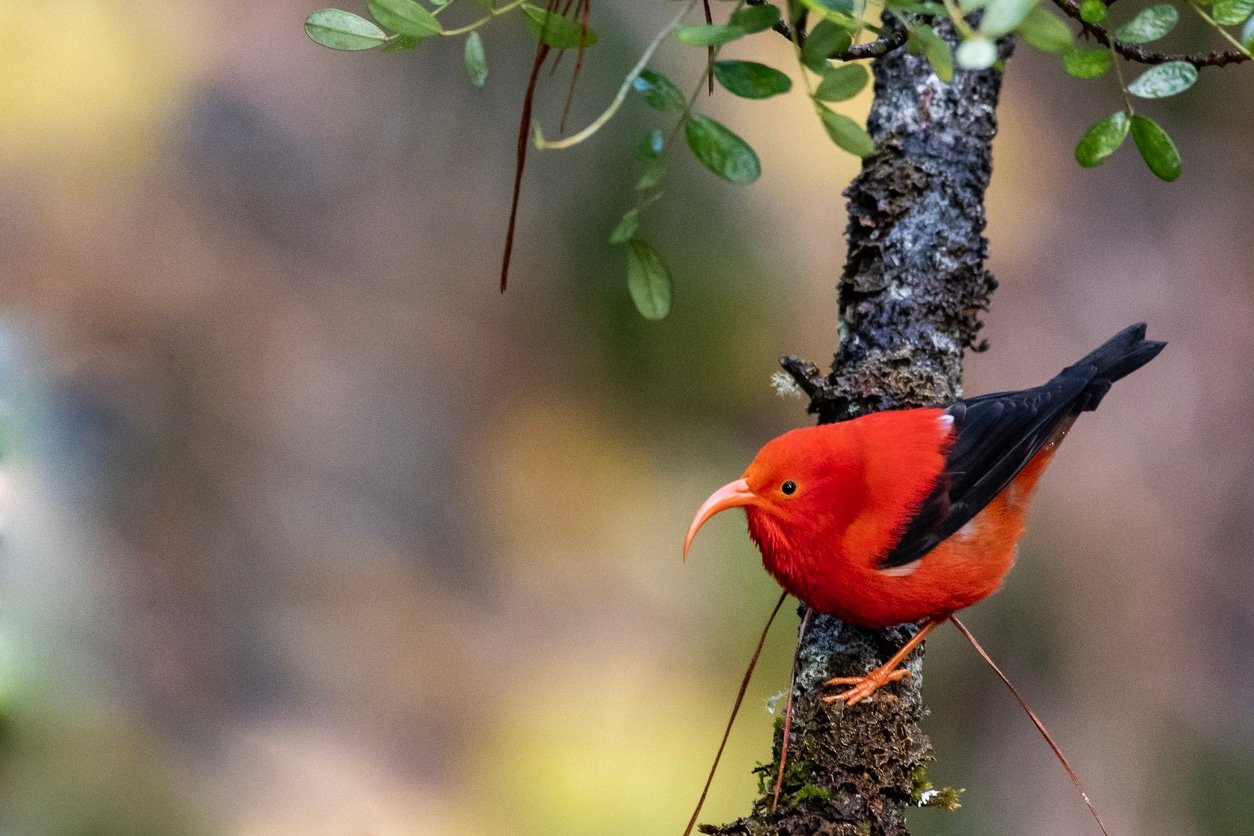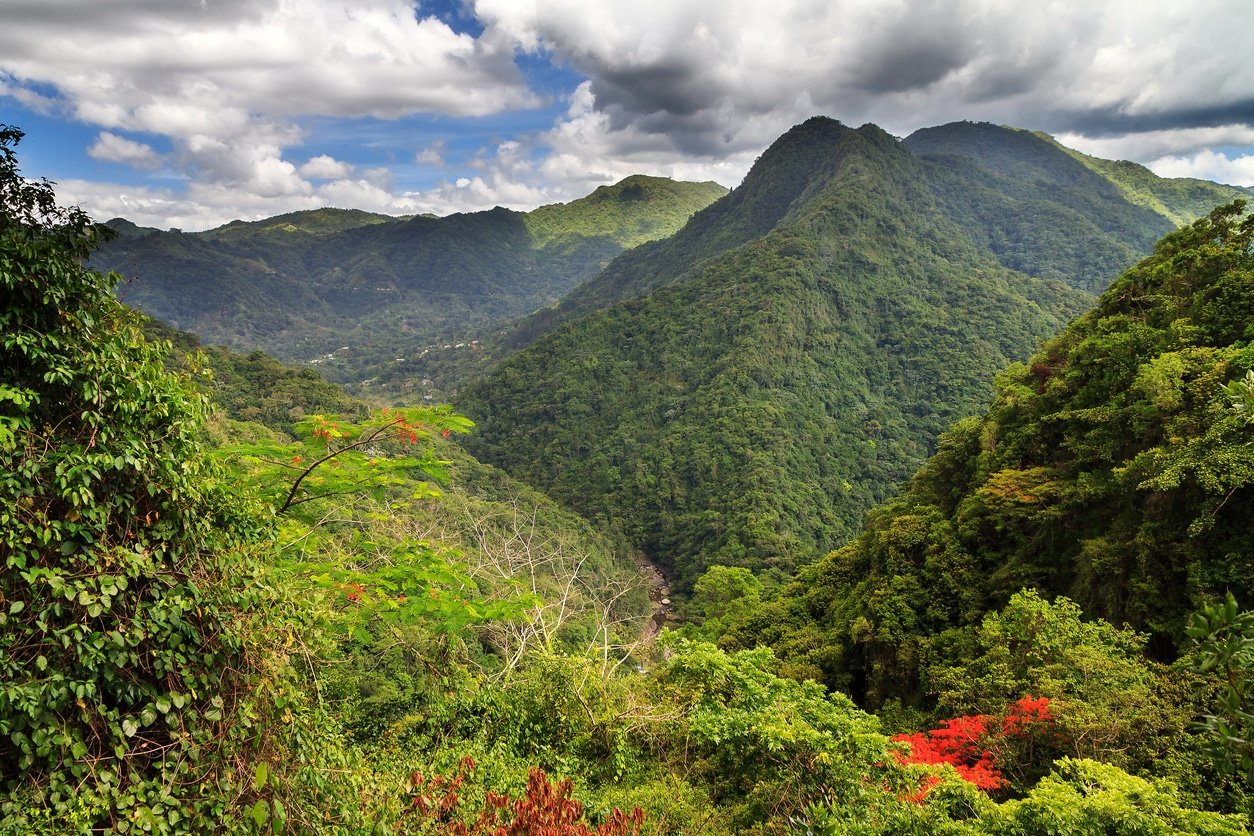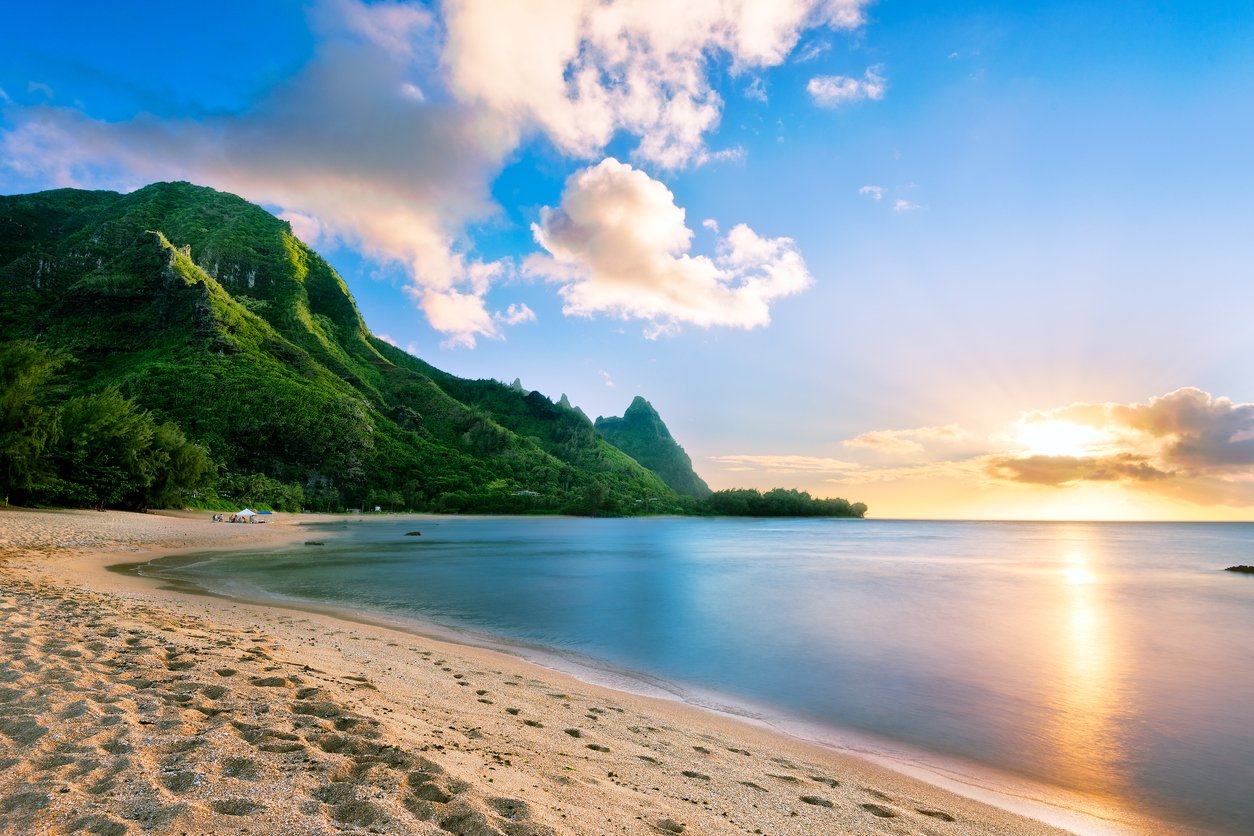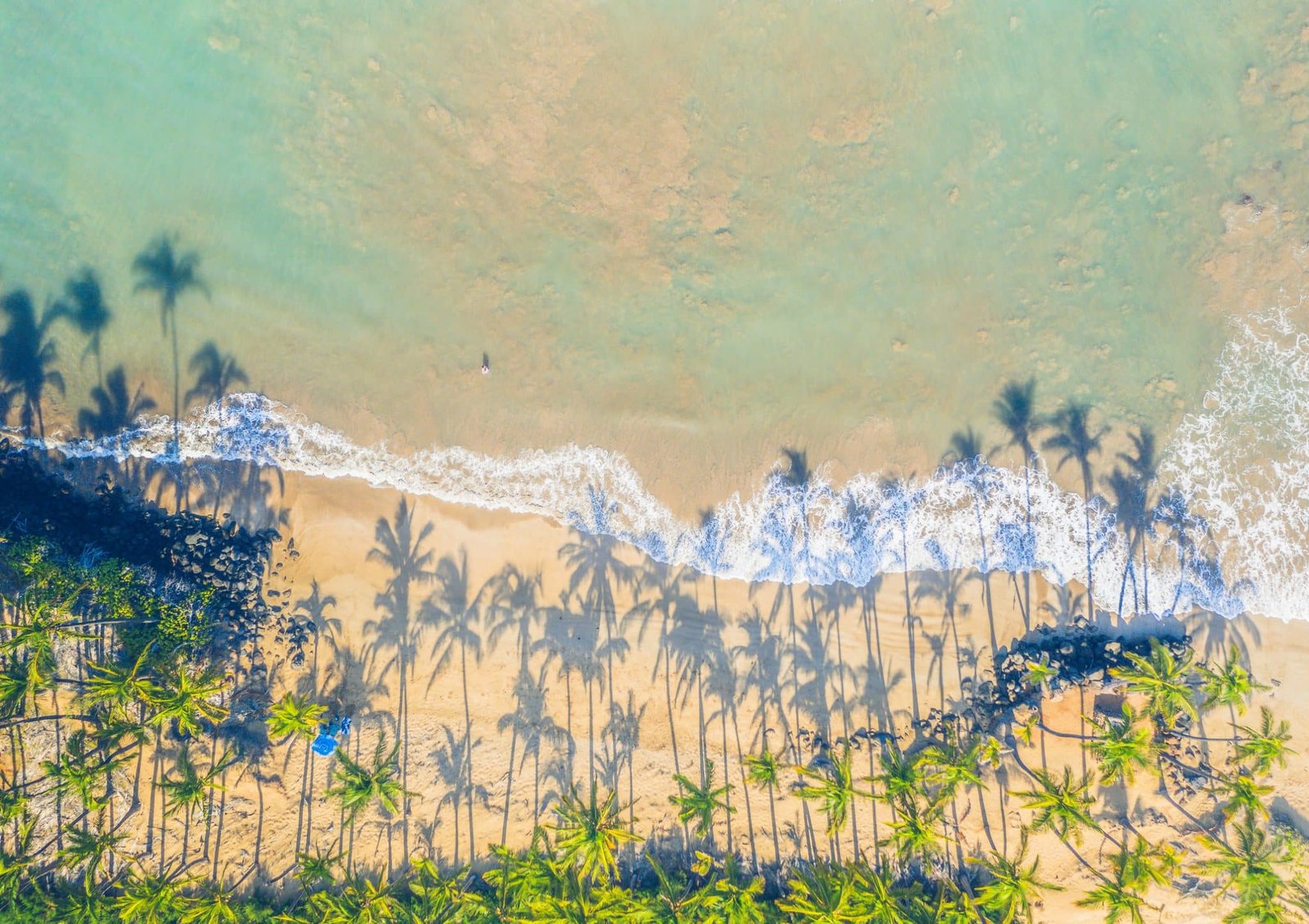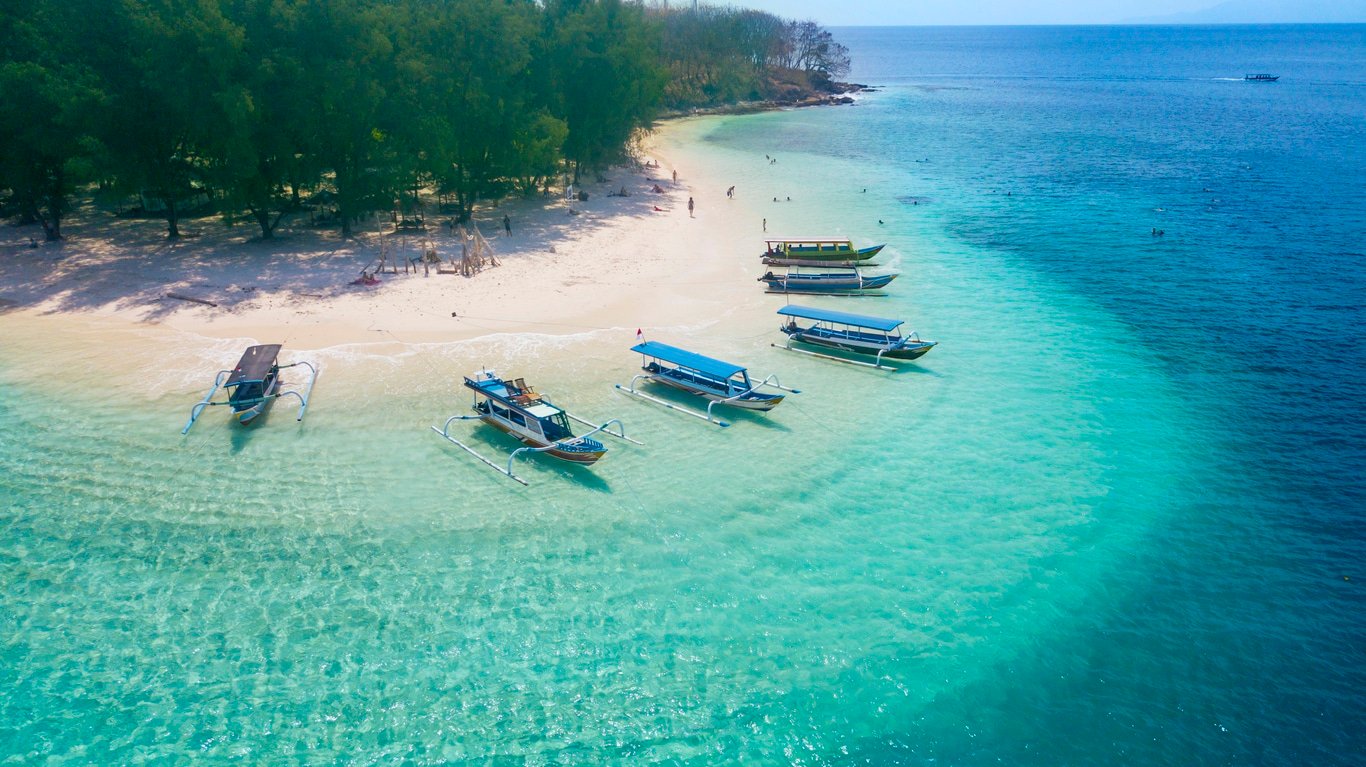Beautiful & Rare Birds of Kauai: Where To Find Them, Photos & More!
Anyone who knows anything about Hawaii will tell you that the Hawaiian island of Kauai is absolutely breathtaking! It is the fourth-largest island in the Hawaiian archipelago, and is often referred to as “The Garden Isle”.
This island is home to breathtaking views and incredible landscapes. But this land is not just beautiful – Kauai is also home to some of the most beautiful birds in Hawaii.
Kauai is a bird watching paradise. You will find a new species to spot each day, including some endemic birds that can only be found on the island.
There are even federally endangered species whose entire population is contained within just the borders of Kauai. So what are you waiting for?
Here’s our list of the 15 most beautiful birds in Kauai, along with information about their appearance, where you can best find them, and more.
While the population numbers vary, each bird is gorgeous and will be a true treat to observe. Good luck, and get watching!
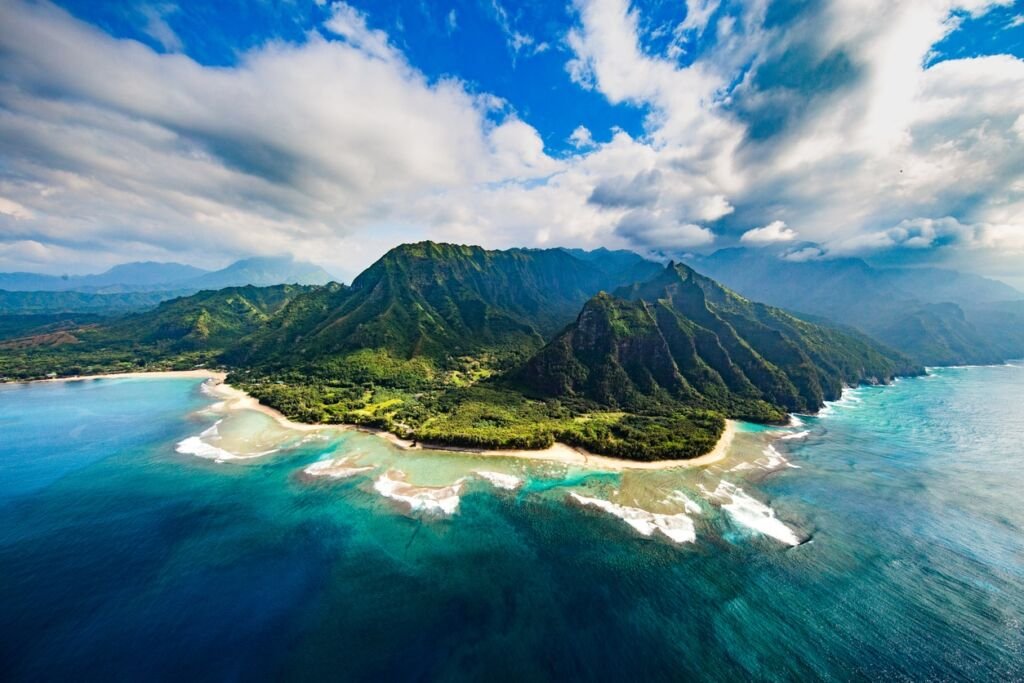
1. ‘Akikiki (Kauai Creeper)
The first bird up on our list is the ‘Akikiki, otherwise known as the Kauai Creeper.
This bird is endemic to the island and considered endangered. In fact, experts estimate that there could be less than 500 of these beautiful tiny birds left in the wild. That makes the ‘Akikiki a rare find for visiting birders.
These birds are small honeycreepers, and are usually pale gray and white in color. They are most commonly seen in the forested Alaka’i area of Kauai, typically at an elevation above 1,140 meters or over 3,700 feet.
They have a calling sound similar to other birds, so they will be best identified by sight. These birds breed from January to July, making that part of the year the best time to find them.
2. ‘Akeke’e
This stunning bird is another honeycreeper, known for its vibrant green and yellow plumage.
They have been listed as endangered since about 2010, and experts say there are less than 1,000 ‘Akeke’e left in the wild. If you manage to see one of these small but eye-catching birds, count yourself lucky.
The ‘Akeke’e nests in high-elevation forests that are in a good condition. Due to this, you are most likely to find them perched in ōhi’a trees on the eastern-most edges of both the Koke’e State Park and the Alaka’i Wilderness Preserve.
These birds breed in March, and chicks hatch in the late summer. Those will be the best times to catch a sight of these gorgeous honeycreepers.
3. Puaiohi (Small Kauai Thrush)
This bird is actually one of only two thrush species endemic to Hawaii! It is found exclusively in Kauai, making it a bird you can only see if you travel to the Garden Island.
Sadly, the Puaiohi is severely endangered. Estimates say there are less than 500 left in the wilds of Kauai. They are distinct for their gray coloring, larger size, and melody.
The Puaiohi is most commonly found in the Alaka’i Plateau. They nest in territories above 1050 meters, or 3444 feet, in elevation.
They breed between March and August, and typically lay two eggs to each nest. Arrive during this time period to hear their distinctive mating call and witness an incredibly rare bird in the wild.
4. Nene (Hawaiian Goose)
No list about Hawaiian birds would be complete without the nene, the official state bird of Hawaii.
They are endemic to the Hawaiian islands and cannot be found anywhere else on the planet.
Their larger size and dark coloring makes them stand out, with most mature nene being about 16 inches or 41 centimeters tall.
The entire population is estimated to be around 2,500, making the nene the rarest goose in the world. You will find them easily in large and grassy areas, such as the Kilauea National Wildlife Refuge or even on big golf courses!
Nene are surprisingly serene, and after observing one it will become clear why they were named the official bird of Hawaii.
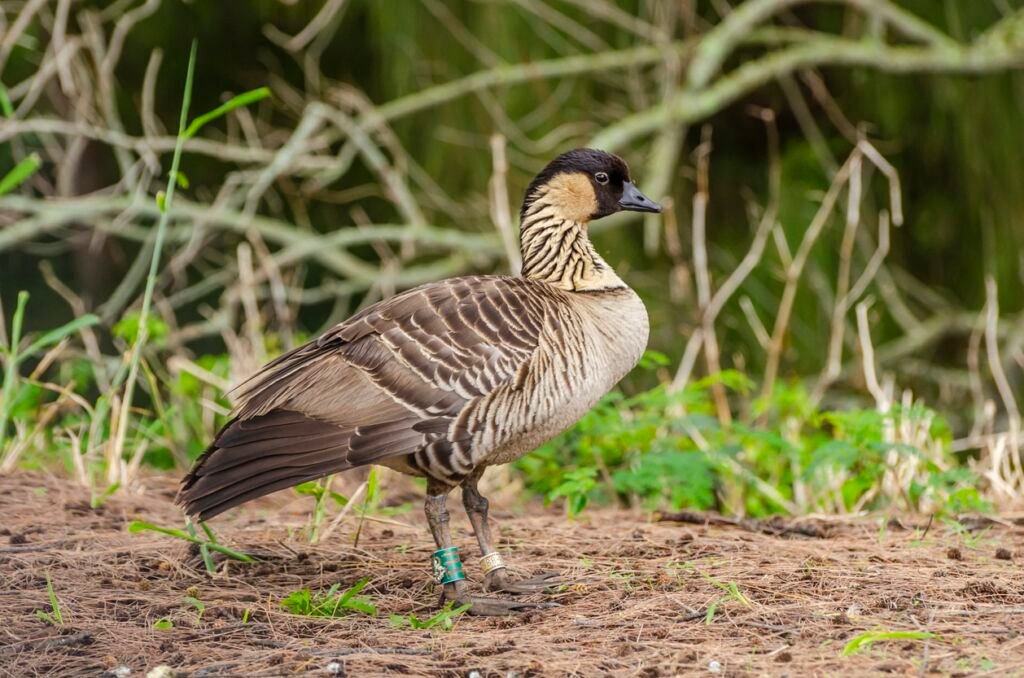
5. ‘Alae Ula (Common Moorhen)
Much like the nene, the ‘Alae Ula (also known as the common moorhen or the Hawaiian Gallinule) is deeply connected to the history of the land.
The legend says that these unique birds brought fire from the volcano gods to the people, and they earned their distinctive bright red heads as a result. ‘Alae Ula are easy to spot thanks to their dark gray coloring, bright red frontal shields, and aquatic habitat.
Unfortunately, these beautiful birds are endangered. Their total population is estimated to be only in the hundreds, making them a rare find for any avid bird watcher.
You’ll find them near bodies of water and the wetland areas of Kauai.
6. ‘Anianiau (Hawaiian Honeycreeper)
Did you know that the ‘Anianiau is actually the smallest honeycreeper that exists today? That makes it a tough one to spot, and a rare find indeed.
Their colors range from bright to dull yellow-green, with males being brighter than the females.
This incredible bird can only be found in Kauai and the overall population has declined slightly as a result, but it’s considered to be stable and above the threshold of being endangered.
You can find these tiny wonders in the mountainous ranges of the island, typically above 600m in elevation. They are mostly spotted in the forests of the Koke’e’, Alaka’i, and Waimea regions.
They breed from February to June, making this a great time of year to spot them and hear their calls!
7. ‘Apapane (Common Honeycreeper)
If you wish to see vibrant colors, the ‘Apapane will not disappoint! Both males and females in this species have crimson feathers and black wings, making a striking combination.
These birds are an excellent find because of their wide-ranging melodies, and experts have noted they have at least ten different songs and six calls! Listen closely and see what you can hear.
They nest in forest habitats in high elevation, almost exclusively in ‘ōhi’a trees. This makes the Koke’e State Park and the Alaka’i Wilderness Preserve excellent places to find them!
This species is not endangered, but spotting them is a great experience all the same.
8. ‘I’iwi
The ‘I’iwi is considered to be one of the most distinctive Kauai birds, which is certainly a bold announcement when you consider how many beautiful birds occupy the Garden Island.
This Kauai bird is known for their bright red feathers, black wings, and decurving pink bill. Hawaiian royalty coveted the birds and used their feathers for cloaks and helmets. You’ll understand why when you see one in action.
The I’iwi are incredibly vulnerable to avian malaria, and this has contributed to their population on Kauai declining. Count yourself lucky if you see this stunning bird!
Breeding season peaks from February to June, so you’ll have a better chance at finding one then. These wonderful animals are one of the most unique birds in Kauai. (Related: The Most Beautiful and Rare Birds of Oahu).
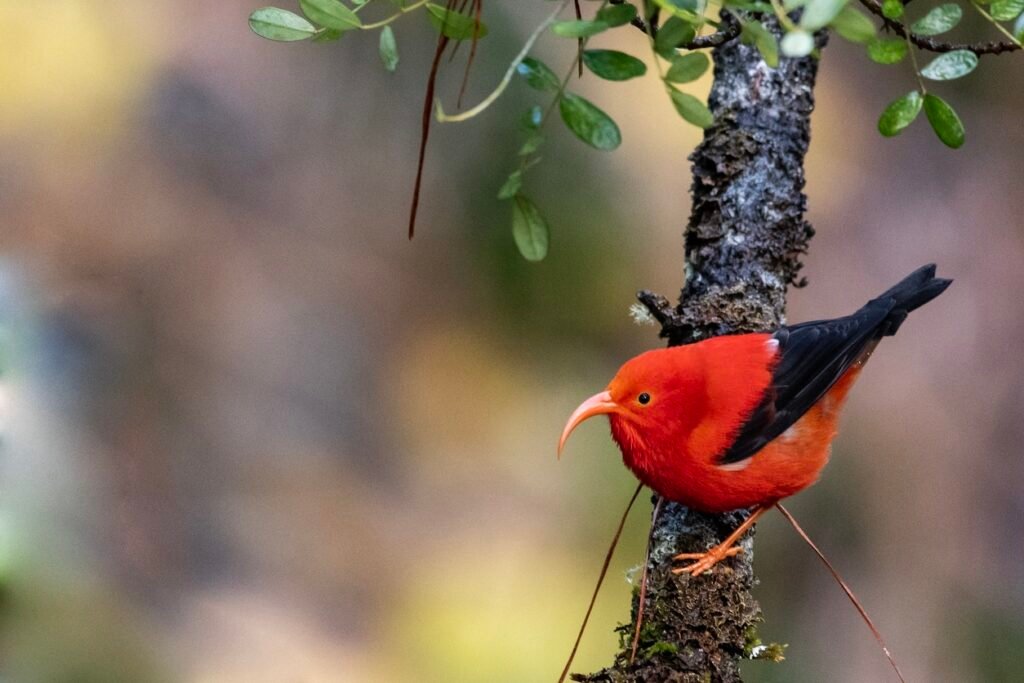
9. Kauai ‘Elepaio
Good things come in small packages, and nowhere is that more obvious than with the lovely ‘Elepaio.
This flycatcher is a brownish gray, and most weigh only between 12-18 grams. They have distinctly long tails held at an upward angle that bird enthusiasts can use as a clue to spot them.
In Hawaiian mythology, these Kauai birds were seen as guiding spirits for canoe makers.
You may find ‘Elepaio on other Hawaiian islands, but the Kauai ‘Elepaio specifically is endemic to the Garden Island.
They nest in highly elevated forests, and you’ll be most likely to find them in the Alaka’i Plateau. Their breeding season can change, but typically will last from February to June.
10. Kauai ‘Amakihi
This bird is a unique olive-green color with a distinct downward curving bill. The Kauai ‘Amakihi is a honeycreeper, and is actually the largest ‘Amakihi species.
As the name suggests, they can only be found on the island of Kauai. This makes them an exciting find that you can’t get anywhere else. Fortunately, the fact that they are endemic to Kauai has not impacted the population; and they are not endangered.
The Kauai ‘Amakihi nests in high elevation, similar to other birds on this list. If you’re hoping to spot this lovely specimen, they can be found in the forests of the Alaka’i and Koke’e regions.
Search for forests with lots of koa wood, as that is their preference. You can find them at their peak in the early to late summer season.
11. Kāmaʻo (Large Hawaiian Thrush)
The kāmaʻo was once considered the most common of the Kauai birds. Over the years, the population has declined to the point that experts sadly declared them extinct in September 2021.
But some believe a few individuals may still exist, and many people pour through the forests of Kauai for a simple glimpse of this bird – a glimpse that could be quite the discovery for anyone who sees it.
This species has brown and olive feathers, and breeding most commonly occurs in the spring. This makes the spring season the most likely time to actually see a kāmaʻo.
Listen for their melodic call and see whether or not you’ll make history by spotting one!
12. ‘Ua’u (Hawaiian Petrel)
The next entry on our list is the ‘Ua’u, also known as the Hawaiian Petrel. These Kauai birds are relatively large compared to others, but that doesn’t make them easy to spot!
As they are endemic to Hawaii, they are considered to be endangered. Experts estimate there could be less than 1,000 left in the world.
Their gray and white mottled coloring is gorgeous to look at, and their distinctive sounding call is a true treat to hear. You’ll be most likely to see the lovely ‘Ua’u at Waimea Canyon State Park in Kauai.
Breeding typically lasts all the way from March to October, giving you a wide window of opportunity to visit and see them.
13. Nukupu‘u
The Nukupu’u is an extremely rare find, seeing as they are considered critically endangered. You shouldn’t be disappointed if you don’t spot this elusive figure – the population is estimated to be low enough that they face the likely threat of extinction.
These birds are known for their yellow bellies and green backs which create a striking combination. They also have a long and decurved beak.
The most recent sightings pinned these Kauai birds as preferring high elevation such as in the Alaka’i and Koke’e regions, and they breed from early spring to late summer.
A sighting is unlikely, but if it does happen you will not be disappointed.
14. Red-footed Booby
The Red-footed Booby is known for (you guessed it) the distinctive red feet it possesses! While the rest of its coloring is white, the feet are a deep red that stands out starkly. Juveniles are typically brown in color before growing into their new coloring.
These birds are actually widely found in the tropics, but the red-footed booby is by far the most common one found within Hawaiian waters.
There is a smaller and more rare subset of the red-footed booby that retains brown coloring even into adulthood. You can find these lovely birds at any coastal location in Kauai, and typically in abundance.
The red-footed booby is not endangered, making them an easy find to enjoy. They also breed year round, allowing you to see them whenever you visit.
15. White-tailed Tropicbird
There are three tropicbird species in the world, and the White-tailed Tropicbird is the most widespread along tropical regions like Hawaii.
These birds are known for their white plumage with distinctive streaks of black coloring along their back and wings. Nearly half of the total Hawaiian population of this bird can be found on Kauai!
To find these stunning specimens, look at the Waimea Canyon State Park as well as the Na Pali Coast. These birds also breed all year, although experts have noted a small drop in the winter. This makes the other seasons, particularly spring and summer, the best time to spot them.
This bird is not endangered, but you may find it hard to spot all the same as they tend to fly quite high above the surface.
,


